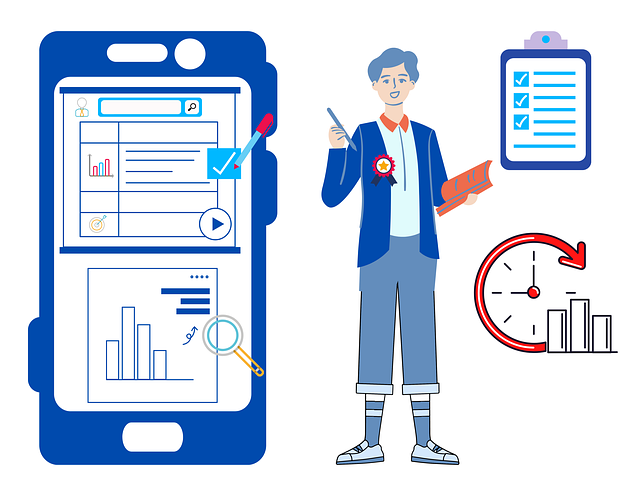Integrating AI automation into automotive service centers transforms operations and enhances customer experiences. AI algorithms analyze historical data to predict service needs, optimize workforce allocation, and schedule repairs proactively. Personalized communication through chatbots and timely reminders based on vehicle requirements foster client engagement. This approach streamlines scheduling, reduces manual effort, and boosts productivity by enabling technicians to focus on complex tasks. Best practices include seamless integration of AI tools, staff training, customization for specific brands, regular updates, and robust data management.
In today’s digital era, AI automation is transforming various industries, and automotive service centers are no exception. Understanding the potential of AI can revolutionize how these centers operate, enhancing efficiency and customer satisfaction. This article delves into three key aspects: exploring the capabilities of AI in automotive service centers, providing a step-by-step guide to automating repair scheduling, and discussing benefits along with best practices for successful implementation, focusing on AI automation for automotive repair scheduling.
- Understanding the Potential of AI in Automotive Service Centers
- Automating Repair Scheduling: A Step-by-Step Guide
- Benefits and Best Practices for Implementing AI Automation in Automotive Repair Operations
Understanding the Potential of AI in Automotive Service Centers

In today’s digital era, integrating Artificial Intelligence (AI) into automotive service centers presents a game-changing opportunity to revolutionize operations and enhance customer experiences. AI automation for automotive repair scheduling is a prime example of this transformative power. By leveraging machine learning algorithms, service centers can streamline their processes, reducing manual effort and potential human errors.
AI can analyze historical data, understand patterns in vehicle maintenance needs, and predict upcoming service requirements. This predictive capability enables proactive scheduling, minimizing wait times for customers and optimizing the center’s workforce allocation. Moreover, AI-driven systems can personalize communication with clients, providing timely reminders and recommendations based on their vehicle’s specific needs, thereby fostering a more engaged and satisfied customer base.
Automating Repair Scheduling: A Step-by-Step Guide

Automating Repair Scheduling: A Streamlined Approach
In today’s digital era, embracing AI automation for automotive repair scheduling is a game-changer for service centers. By implementing artificial intelligence, centers can efficiently manage appointments, reduce wait times, and enhance overall customer satisfaction. Here’s a step-by-step guide to navigate this process.
First, integrate an AI-powered scheduling system that learns from historical data. This enables the platform to anticipate future demand, optimize resource allocation, and suggest optimal appointment slots. Next, utilize machine learning algorithms to analyze customer preferences and service patterns, allowing for personalized appointment reminders and notifications. Additionally, natural language processing (NLP) can facilitate seamless communication with customers through chatbots, answering queries and providing real-time updates. As a result, the scheduling process becomes automated, efficient, and tailored to individual needs.
Benefits and Best Practices for Implementing AI Automation in Automotive Repair Operations

Implementing AI automation in automotive repair operations brings a multitude of benefits, revolutionizing how service centers manage their daily tasks. By automating processes like scheduling and diagnostic support, AI enhances efficiency, reducing manual labor and human error. It enables technicians to focus on more complex repairs, improving overall productivity and customer satisfaction. AI-driven systems can analyze vast amounts of vehicle data, providing accurate and swift diagnostics, which leads to faster turnaround times for repairs.
Best practices suggest integrating AI tools into existing workflows seamlessly. This includes training staff to work alongside AI, ensuring a smooth transition. Customizing AI algorithms for specific automotive brands and models is vital for precise results. Regular updates and feedback loops should be established to teach the AI system new techniques and adapt to evolving vehicle technologies. Effective implementation also requires robust data management, ensuring the AI model has access to reliable and up-to-date information to make informed decisions.
AI automation is transforming automotive service centers by streamlining processes, from enhancing repair scheduling efficiency to delivering accurate diagnostics. By implementing AI, centers can reduce wait times, optimize workforce allocation, and improve overall customer satisfaction. Following the outlined step-by-step guide and best practices, service providers can harness the potential of AI automation for automotive repair scheduling, marking a significant advancement in their operations.
